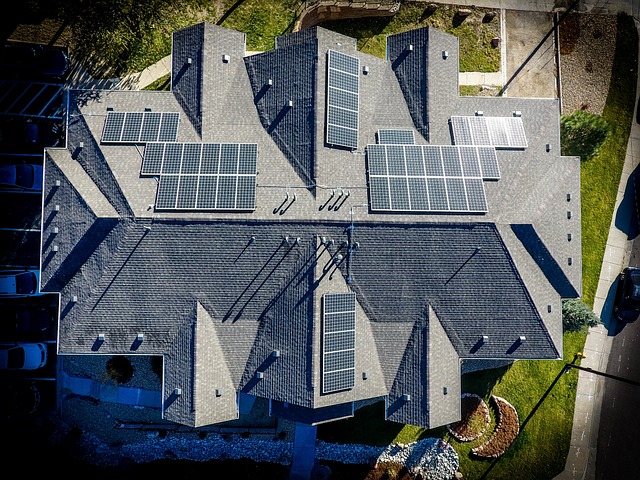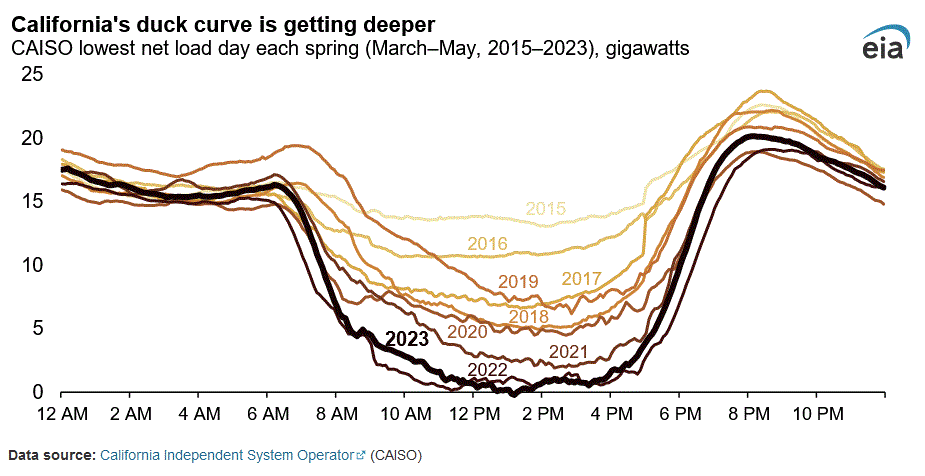 By Jo Nova
By Jo Nova
California was the Land of Solar Panels at the top of the Magic Subsidy Tree but that boom went bust
If solar panels were actually cheap and useful, everyone could have them, they’d pay for themselves, and there would be no point where the panel-party would grind to a halt. But if they were expensive, made something useless, and their product became toxic to the grid itself the government would have to artificially subsidize them to get them onto the grid in the first place, and then pop its own bubble before the bubble popped the grid. And so that time has arrived in California and there is carnage in the market.
The Duck has quacked
In a strange coincidence the Californian government cut the payments for solar-powered-electricity by 75% last year, and sales of solar panels fell to a quarter of what they were a year ago. That’s a “to” not a “by”. One in five solar contractors has already left the market. Careers and businesses — gone.
The new price for solar-powered-electricity is probably slightly closer to the true market value, which is almost zero, or even less for holy-green electricity at noon. The Duck Curve is the shape the daily load curve makes. As more and more solar panels are added to the grid the demand for electricity falls at midday, but stays the same at breakfast and dinner. So the amount of electricity required for the state gradually develops a “belly” at noon, and looks like a duck. As more solar panels are added, the grid ends up with too much electricity at midday, which is such a problem it has to pay someone else to use it. In a real free market, negative wholesale prices at midday should have killed off the solar panel rooftop industry years ago.
by Phred Dvorak, The Wall Street Journal
The Home-Solar Boom Gets a ‘Gut Punch’
The state has installed so many panels that it has a glut of solar power during the day. Last year, California implemented new rules that cut the amount of compensation most rooftop solar owners get for the electricity they send to the grid by 75% or more to manage the oversupply and soaring costs for upgrading the grid.
Residential solar sales have dropped to a quarter of what they were a year ago, and more than a fifth of the state’s solar contractors have been laid off, according to some estimates.
“It was like getting a gut punch,” says Carlos Beccar, marketing director of Fresno-based Energy Concepts, a solar installer that had to lay off more than half its 75 employees after sales plummeted as much as 90% following the new rules.
The journalists spin the solar excuses
At the same time, California’s solar growth is outpacing the ability of its grid to handle it.
It’s not that solar-electricity is a useless toxic byproduct of subsidies, it’s that solar is so good, the grid is not ready for it. In other words, it’s all your fault. You need to pay more for that grid “upgrade”, or storage, or something so the little solar flowers can thrive.
Who knew, the job of the grid was not to supply electricity, but to “absorb” the subsidy farmers:
The state already supplies more than a third of its power with renewables, and it plans to raise that ratio to 60% by 2030. But because the state’s grid can’t absorb all the solar power generated during the day, it ends up throwing increasing amounts of it away or curtailing it.
Get ready, the next step is to corral us into paying more to solve the mess they created:
Part of the rationale behind the state’s new solar billing rules is to encourage households to buy batteries, which can store power for use later.
See how the planned economy works? The subsidies forced useless white elephants onto the grid. The fees to cover the costs were set so the people without solar had to pay the subsidies. So their electricity bills went up until their wallets bled, and they begged to buy solar panels “because electricity costs had risen”. Then the government changed the conditions so that people with solar really needed to buy a battery …
More than 30% of homes in Australia have solar panels installed. In California, in 2019 apparently 44% of homes had solar panels. But as extreme as that is, California is connected to other states in the US, so it can offload the extra electricity, or upload electrical juice from other reliable generators. Australia doesn’t have that option. We have to put the spare electricity in shoe boxes and float it over to Papua New Guinea.
Image by Charlie Wilde from Pixabay
